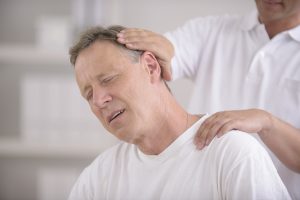 Arthrosis is a disease of the bone joint – basically, the area where two bones meet, such as the knee joint, for example. It is made up of cartilage and fibrous connective tissue. When the tissue and cartilage degenerate, it is known as arthrosis. Over time, cartilage degeneration results in the loss of free movement in the joint. Cartilage also ensures that bones do not rub together, but when it’s worn down, the bones get damaged, resulting in cracking, holes, or even ulcers formed on either end of the bone.
Arthrosis is a disease of the bone joint – basically, the area where two bones meet, such as the knee joint, for example. It is made up of cartilage and fibrous connective tissue. When the tissue and cartilage degenerate, it is known as arthrosis. Over time, cartilage degeneration results in the loss of free movement in the joint. Cartilage also ensures that bones do not rub together, but when it’s worn down, the bones get damaged, resulting in cracking, holes, or even ulcers formed on either end of the bone.
You may be more familiar with the other term for arthrosis – osteoarthritis. It is most common in older adults because cartilage wears down with age.
Advertisement
There are six different types of arthrosis: cervical, facet, coxarthrosis, lumbar, knee, and AC joint.
Cervical arthrosis
Cervical arthrosis affects the cervical vertebrae – the bones of the neck part of the backbone. Cervical arthrosis is often age-related and triggered by stress and wear and tear. It is often associated with chronic neck problems. Symptoms include neck stiffness and pain, muscle spasms, tension-type headaches, and muscle stiffness. Treatment may involve wearing a neck brace and undergoing physical therapy.
Facet arthrosis
Facets are joints between the vertebrae that run along the spinal cord. Causes of facet arthrosis are wear and tear over the years and stress. Poor posture can also contribute to facet arthrosis as it puts added stress on these joints. Facet arthrosis is most common among seniors and can cause pain in the back, especially in the upright position. Location of pain can help determine which facets are affected. Treatment may involve a neck or back brace, pain medication, rest, and reduction of activity levels.
Coxarthrosis
Coxarthrosis is arthrosis of the hip joint and is very common among seniors. The hip joint is a ball and socket joint, and is one of the strongest in the body. It endures plenty of stress and use. Coxarthrosis is caused by wear and tear, seen in seniors and athletes, and also by extra weight. Symptoms include hip pain, which is worsened while standing or walking, a grating sound, and an impaired range of motion. Treatment includes medications, mobility aids, and in severe cases, hip joint replacement surgery.
Lumbar arthrosis
Advertisement
Lumbar arthrosis affects the lower back, the area of the body that endures the greatest weight and pressure. Lumbar arthrosis is caused by years of bad posture and abdominal obesity. Symptoms include pain in the lower back, which worsens when upright and may ease when laying down, and loss of flexibility. Treatment involves wearing a back brace, undergoing physical therapy, taking medications, losing weight, or wearing a lumbar supporting belt.
Knee arthrosis
Knee arthrosis is a very common type of arthrosis as the knee joints withstand a great deal of weight and stress. It is caused by normal wear and tear, but its pathogenesis can be accelerated in those who overuse their knees – for example, athletes. Obesity is another risk factor for knee arthrosis. Main symptoms include knee pain and tenderness that can worsen with walking. Stiffness can occur along with reduced range of motion. Treatment options include weight loss, mobility assistive devices, knee injections, medication, and surgery.
AC joint arthrosis
The acromioclavicular (AC) joint is found in the shoulders. AC joint arthrosis is caused by normal wear and tear, but also may develop as a result of an injury to the shoulder. This type of arthrosis is also commonly seen in weight lifters. Symptoms include tenderness, pain, limited mobility and flexibility, and a snapping or clicking sound. Treatment involves immobilizing the joint to decrease movement, taking medications, and undergoing prolotherapy, although this is less successful in seniors.
